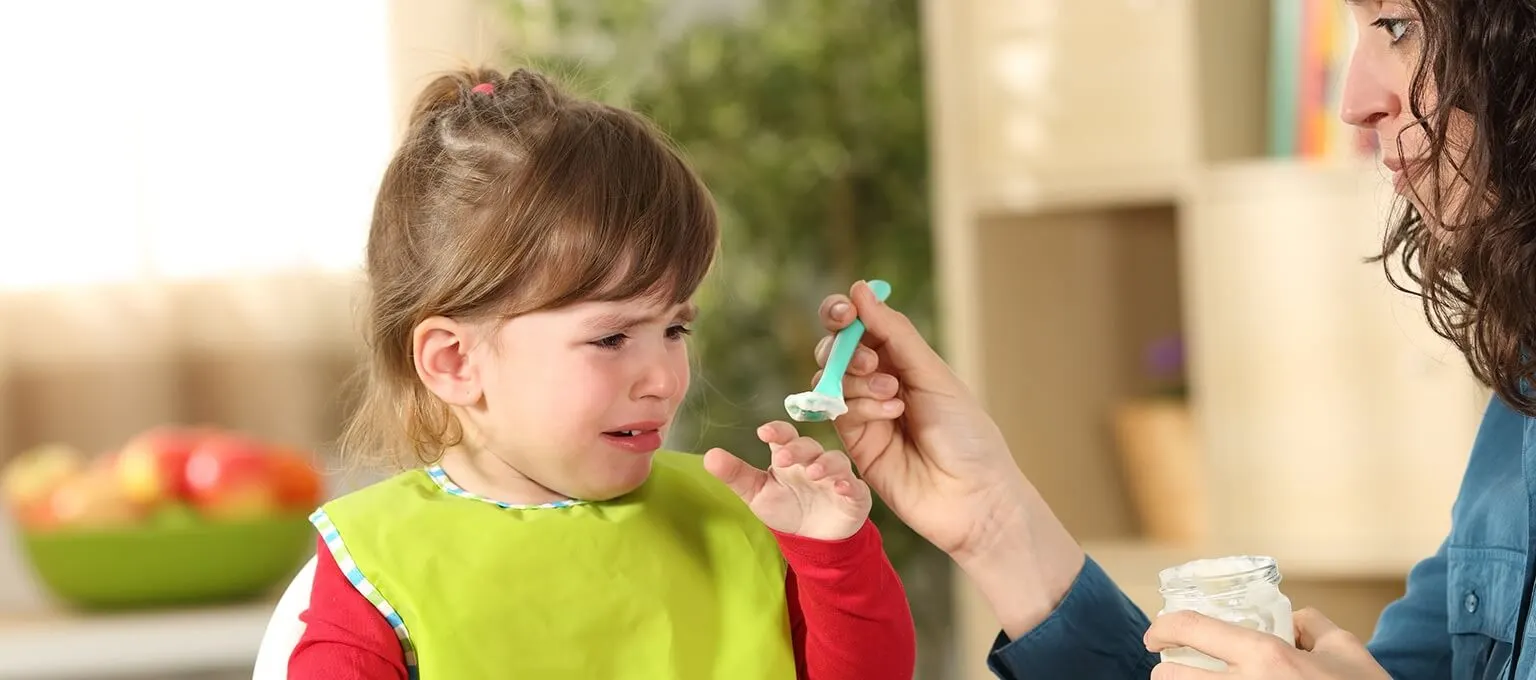Toddler Pushing Boundaries? Learn Techniques to Help you Best Handle the Situation
As parents, we are bound to come across behavior issues with our children. There are four major tools we can use to help resolve many of those issues we encounter. We’ve discussed understanding power and setting age-appropriate boundaries and expectations. After the boundary has been made clear, we have a reason to talk about the third tool in the Back To Basics Parenting lifestyle, which is consistency and follow through.
Without a boundary in place, your child can’t be expected to know what is and what isn’t acceptable behavior. Once you have set a boundary with your child, you must consistently have an appropriate response when they try to test that boundary with you. Babies and kids are masterful boundary testers! Our children test boundaries as part of their social and emotional development. We, as parents, need to be the predictable boundary they bump into.
For example, I am a stickler for children speaking without whining. As such, children in my care know that I expect them to speak in a nice voice if they want me to listen. That is the boundary I set. If I let them whine sometimes because I just don’t feel like saying no right now, I am being inconsistent and am sending them a confusing message.
If you have decided that a certain behavior isn’t okay, you have to uphold that boundary every single time that behavior happens. In this example, when I hear that whiny voice, I stop them immediately and say, “I cannot understand you when you use that voice. When you are ready to use a nice voice, I am ready to listen” or something along those lines. If they continue to whine, I promptly ignore them until they make an effort to speak nicely. The very worst thing I can do in this situation is give them any sort of positive attention while they are whining.
In case there is a need for clarity, "Positive attention" includes:
Giving them the thing they are whining for
Hugging them
Picking them up
Being silly or playful
Smiling at them
These are all things that they either want directly, or enjoy getting from you, even if it isn’t exactly what they’re whining for. If I give into them during the undesirable behavior, the message they are getting is this: “When I whine, I get things I want.” It gives them more motivation to whine more often and for longer periods because they have learned that whining is an effective tool.
As an important side note, whining, screaming and tantrums are all learned behaviors, which parents have unintentionally taught their children starting in early infancy. These unappealing learned "skills" are accidentally taught and reinforced through a lack of consistency when a boundary is broken even as little as 2-months-old (see previous article). Every time we give in and allow undesirable behavior, we are unintentionally giving their poor choices our stamp of approval. When we have children who others might describe as entitled, bratty or poorly behaved, that is not the child’s fault. What we are seeing, is exactly what the adults have taught that child is acceptable and effective behavior.
As much as it isn't the child's fault, it is really not 100% the parent's fault either. It's just a giant miscommunication between parent and child. Most parents simply don't realize how small decisions to not set and enforce a boundary, make such a huge long-term impact on behavior. Parents also tend to not realize that setting and enforcing boundaries starts as young as it does, within the first 2 months of life. Which is exactly why it is important to talk about this and bring it to the attention of parents who want to make a change. Or, if you are lucky and reading this while your child is still a baby, you can actually prevent this massive miscommunication between you and your little one from getting out of control in the first place.
Here’s a real life example from a client of mine:
She has a 13-month-old who has had 13 months of being the boss at home. In every way, she has her parents trained. Diaper changes happen standing up because “she doesn’t let me” change her laying down. Getting undressed for bath takes forever because “she doesn’t let me” get her clothes off. Mom’s arms and back are always sore because, she “doesn’t let me” put her down. Mom isn’t able to do anything from 7pm-midnight because “she wakes up and I have to rock her back to sleep”. See the pattern? This baby has never had a boundary set or enforced. This baby has learned that if she cries or fusses or gives an ounce of physical resistance, that mom will give in. This wonderfully loving mom only realized this was a problem when she found out she is pregnant again. Imagining holding her toddler all the time, and losing sleep as her belly got bigger and then later, with a second baby, it struck her that this just isn’t sustainable.
I share this with you to help illustrate the point; establishing and following through with boundaries early on is important because these unmanageable behaviors sneak up on us and become habits that are hard for your child to break, and heartbreaking for us to watch them go through the process of learning they are no longer in charge.
Let's say you set a boundary with your 3-year-old: No climbing on the coffee table. You have your reasons for not wanting this particular behavior, so you set the expectation with your child.
The first time you see the behavior happen after setting the boundary, you react correctly and firmly tell them they may not climb on the table. Good for you! That's a great start. But then you have to react that same way every...single...time. Here are the two main reasons parents will give for allowing their child to break the boundary:
I'm in a great mood and feeling playful, I don't mind the climbing if it makes them happy.
I'm in a bad mood and lacking the energy to discipline, it's easier to let them climb on the table then it will be to enforce the boundary.
Think about this from the child's perspective. One day you climb on the table and you're told “no, you may not do that.” The next day you climb on the table and your parent laughs and playfully chases you as you climb on and off the table, being tickled and having a great time. The next day, you climb on the table and the parent firmly says, “no, you know you can't climb up there!” Then the next day you climb on the table and the parent looks at you, considers saying something, then changes their mind and allows it because they're too sleepy to enforce the rule.
That is a very confusing message for the child. Boundaries need to be in place and you need to be predictably reacting regardless of your mood or your level of patience in the moment. Nobody said parenting is easy. Yes, it takes consistency and follow through even in moments you'd rather not exert the energy.
Part of consistently enforcing the boundary is having a consequence for breaking the rule.
I assume we all agree now, that if a boundary is being pushed and tested, the parents need to uphold that boundary every time so the child is learning that it is not okay. However, it is equally crazy and unproductive, for a parent to simply verbally repeat over and over and over the same rule, as their child feels comfortable breaking the rule over and over because there is no tangible consequence for the behavior. Here's an example I just witnessed:
A family is out to dinner. The 5-year-old asks for bread from the bread basket that arrives before the meal. The parent says, yes, you may have one. The child eats one piece of bread then reaches for another. The parent says, “No. Your dinner will be here soon, no more bread." The child smiles with a mischievous twinkle in his eye that I recognized from the next table. That look children who run the house all have. The look that says, "actually, I'm gonna do whatever I want.” The child grabs the bread and smiles at the parents. Then, the parents did nothing to uphold the boundary being broken. The child finishes that bread and reaches for another as dinner is arriving. The parents say, "No, I said no more bread. Your dinner is here." The child disregards the objection completely and grabs more bread, instead of eating the meal that arrived. It happened two more times through out the meal. So what is the issue here? Did the parents respond consistently to the boundary of "no more bread"? Yes, verbally they did respond consistently. But the fact of the matter is, you do need a consequence in place if the child keeps pushing. It should go something like this:
The child reaches for the bread the second time, and the child is met with the parent removing the bread from their hand, moving the bread basket from their reach, and firmly saying, "I said no. Your dinner will be here shortly.” The natural consequence for reaching to grab more bread, is the child does not get to have that bread.
In general, the flow should be something like this:
Child pushes a boundary
Parent verbally reminds them that they may not do whatever it is, plus a reminder of what they CAN do instead.
Child pushes a second time
Parent verbally reminds of boundary, and this time, adds in that there will be a consequence if they try again.
Child pushes a third time.
Parent swiftly enforces consequence, without discussion, just action.
When I say a child needs consistency and follow through, it is not simply limited to meeting an undesirable behavior with a verbal limit being hit. The consequence must follow if they push more than twice, otherwise, you will simply be teaching them that you are full of empty threats, and your words carry no weight.
Both parents and caregivers need to be on the same page.
Finally, consistency and follow through are also referring to all adults who regularly see the children. That includes your nanny or babysitter. It includes grandparents if they are consistently seeing your kids. If you are being firm with the boundaries and doing a great job of following through and setting a consequence when your child tests the limit, but your spouse is not doing those things, behavior will not improve. You all need to be in agreement that you all react the same way to undesirable behavior. Your child needs to know that they cannot go to the other parent, or the nanny to get a better answer. They need to know that whatever answer Dad gives, is the same answer Mom would give and the same answer the nanny would give. As my sister and her wife say to my 6 year old nephew, “Two moms, one answer!”
Undermining each other's authority does nothing but create worse behavior, and encourage your child to be sneaky and deceptive. Your child will eventually figure out the skill set of being intentionally deceptive, as that is a basic human skill that we all develop in childhood. But there is no reason to get your child there faster than necessary. If you do disagree with the rule or the consequence your spouse or nanny is putting in place, do not undermine them in front of your child. In front of your child, you need to support their decision and show your child that all the adults agree. Then later, after bedtime, you can sit down and discuss if that rule or that consequence needs to be changed. You can argue about it, have a productive fight for your point of view, and come to an agreement about how to handle it going forward. But whatever you decide, stick with it and don't undermine each other's authority.
We now know that giving power and control, setting a boundary, and consistency are the first three tools necessary to affect change at home. But without the last piece which is all about positive discipline, you won't start seeing a positive shift in their behavior. These all need to work together in order to create a positive shift in behavior and in your relationship with your kids.
Related articles:
Top Tips for Setting Boundaries With Your Kids to Improve Their Behavior
Read more about Toddler
Join a World of Support
through Pregnancy and Parenthood.
TRACK WITH TOOLS
LEARN WITH EXPERTS
GET REWARDED




